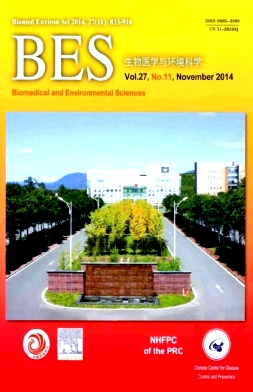Detection of Human Bocavirus in Children with Acute Respiratory Tract Infections in Lanzhou and Nanjing, China
doi: 10.3967/bes2014.110
-
Key words:
- Human bocavirus /
- Child /
- Respiratory tract infections
Abstract: Objective The aim of this study was to explore the prevalent characteristics of HBoV1 and its co-infection.
Methods PCR was used to detect HBoV1-DNA (HBoV1) and other viruses. A multivariate logistic regression model was used to explore possibility of co-detected for related viruses.
Results The positivity rates in Nanjing and Lanzhou were 9.38% (74/789) and 11.62% (161/1386), respectively (P>0.05). The HBoV1 positive group was younger than negative group (P<0.05). Seasonal differences were noted, with a higher frequency of infection in December and July. HBoV1-positive children [72.34% (169/235)] were co-infected with other respiratory viruses. Multifactorial analysis showed no correlations between HBoV1 and the clinical classification, region, gender, age, or treatment as an outpatient or in a hospital. Correlations were identified between HBoV1 infections with ADV (OR=1.53, 95%CI 1.03-2.28), RSV (OR=0.71, 95%CI 0.52-0.98), and IFVA (OR=1.77, 95%CI 1.00-3.13).
Conclusions Presence of HBoV1 in nasopharyngeal aspirates did not correlate with region or gender, although the prevalence of HBoV1 was higher in younger children. There were no correlations between HBoV1 and other variables, except for the season and ADV, RSV, or IFVA infections.
| Citation: | WU Jian Jun, JIN Yu, LIN Na, XIE Zhi Ping, YU Jie Mei, LI Jin Song, CAO Chang Qing, YUAN Xin Hui, SONG Jin Rong, ZHANG Jing, ZHAO Yang, GAO Xiao Qian, DUAN Zhao Jun. Detection of Human Bocavirus in Children with Acute Respiratory Tract Infections in Lanzhou and Nanjing, China[J]. Biomedical and Environmental Sciences, 2014, 27(11): 841-848. doi: 10.3967/bes2014.110 |







 Quick Links
Quick Links
 DownLoad:
DownLoad: